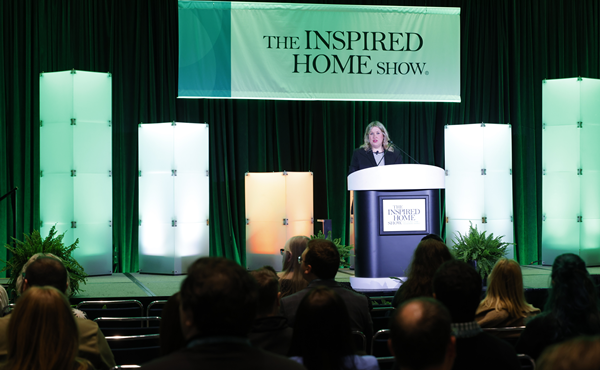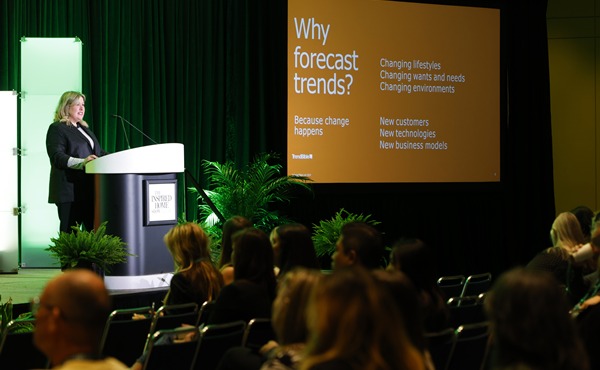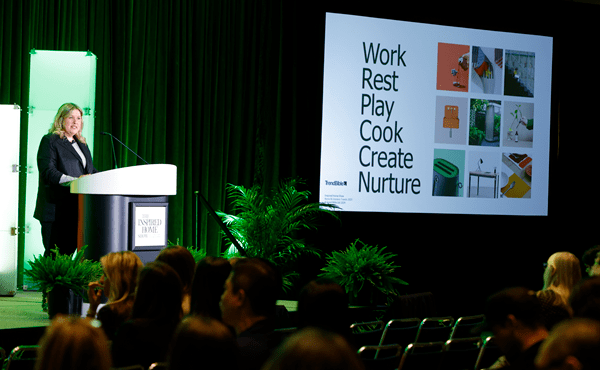Issues like inflation, political instability and climate change continue to influence our world, but today’s consumers are looking to cope by creating stability and balance in their lives and creatively expressing their deeply held values and styles, said Anna Ward, consultancy innovation lead at TrendBible in a keynote session at The Inspired Home Show 2024.
In her session titled Global householder trends: a view to 2025, Ward shared TrendBible’s global interpretation of the trends that will most affect consumers and their lives at home.
“These incorporate mega trends—which typically last 10 to 15 years—which in turn contribute to macro trends, which in turn lead to design and narrative trends, which in turn lead to brand/ecommerce/retail activation,” she explains.

Transient homemaking
An increasing number of consumers find themselves in temporary living arrangements today, whether that means living with parents, a number of similar-age roommates or rental housing.
“Make no mistake, these are necessity-driven arrangements that are anything but poster perfect,” said Ward. These arrangements aren’t just young singles, but may include 30-somethings or young families, she said. In fact, the average age for buying a first home is up to 37 in the UK (up from 32) and 36 in the US (up from 33).
On an emotional level, these consumers are seeking stability and comfort. Logistically, they will be on the look-out for home products that are modular or adjustable. Ward encouraged those in the home industry to think about how their products can provide a feeling of home as well as focusing on items that can “create impact without the price tag, such as a beautiful throw that can transform even the lowliest couch”.

Low desire living
There’s an undercurrent in our hi-tech, high-performing society these days that is driving many people to place more value on simplicity and the luxury of ‘focusing on one idea at a time and doing it well’. It’s driving some to unplug from digital devices and reconnect with what they love.
“This heightened awareness of our values and how we live up to them is starting to dictate who we date, which businesses we support and emphasising the why behind everything we do,” said Ward.
“The consumer will begin to cluster around niche values seeking like-minded life partners, friends and social space.”

Owning it
The ‘Owning it’ trend has both a literal and figurative meaning. It’s literal in terms of current economic conditions and the fact that many people may not be able to afford replacements for certain household items…they may need to fix or improve items they already own themselves.
“But it also has a figurative meaning in that many consumers are feeling the urge to take back control in areas of our lives we can change,” said Ward.
“With this trend, thriftiness becomes a badge of honour,” said Ward, while noting that products that help extend the life of items we already own (such as sofa covers) have become popular, as have storage containers that help you freeze and reheat individual portions of food, thus reducing food waste.

Rebellious creativity
As a way to counteract what she refers to as ‘the doom narrative’ we’ve been hearing for a few years, Ward said rebellious creativity is a way of living with gratitude for what you have rather than focusing on what you don’t. It also allows people to lead with their hearts rather than their heads.
“TrendBible is seeing this start to manifest in a few ways including consumers who are embracing eclectic or unconventional styles…sometimes simply as a way of rebelling against being told what is in style or what they should like. Others are embracing clutter again after determining it’s too hard to keep their homes organised.”







